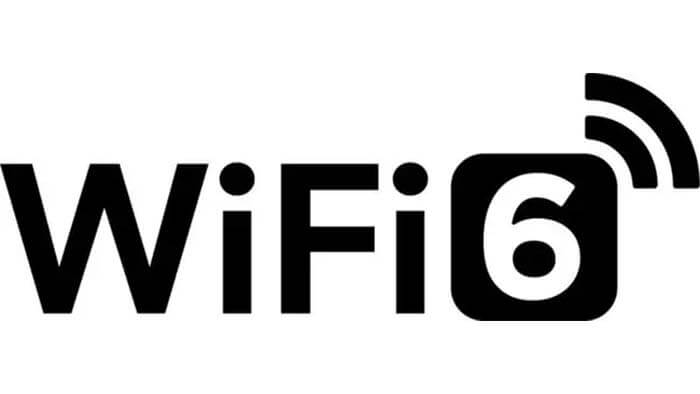This article briefly discusses the update from WiFi 6 to 5G technology under the weight of a massive number of connected devices.
The wireless Internet has changed people’s lives by allowing them to do more in many places, at home, in the office, and even in the field. As long as wireless Internet doesn’t go wrong, the general public has likely never looked into it properly.
It’s like oxygen: you take having it for granted, and you don’t panic until it’s gone.
Over the years, those who have developed and implemented wireless Internet standards have had a common goal: to improve connection speeds while reducing power consumption.
Now, they face a different dilemma. The number of connected devices is on the verge of an unprecedented explosion, with billions of smart home sensors, industrial devices, and artificial intelligence computers connected to the Internet.
However, the current wireless Internet system can not withstand this huge scale of device access.
The next few years will see major changes in all the wireless technologies around people: WiFi 6, the next generation of WiFi technology, Bluetooth 5, the more powerful Bluetooth standard, and of course 5G, the next generation of cellular networks, all of which will play an important role in the upcoming hyper They will all play an important role in the coming era of connectivity, making it easier to connect people and things.
New 5G technology
You’ll hear a lot of talk about the new 5G as every carrier, chipmaker, and device maker manages to gain 5G dominance. But the answer to what 5G really means is not unique.
For starters, in some cases, 5G doesn’t make any sense. U.S. carrier AT&T decided to replace the LTE signal indicators on some phones with “5G E“. Although users are connected to a faster LTE network, it’s still a 4G network.
AT&T CFO John Stephens said at the time that the adjustment was appropriate because the base station upgrade would immediately improve the quality of wireless service.
But overall, 5G is an evolution of the cellular network, capable of delivering extremely fast Internet, many times faster than previous cellular networks or even home WiFi.
However, the rollout of 5G is not as fast. At first, operators will first add 5G components to their LTE networks to make them run faster.
You’ll start to hear about the 5G new-new-space (NR) concept, a technology first used to upgrade existing 4G networks.
5G will initially focus on home broadband, with U.S. carrier Verizon, for example, offering modems such as D-Link’s 5G NR Enhanced Gateway to capture nearby 5G signals and then convert them into WiFi signals for use on users’ existing devices.
Truly independently networked 5G will roll out later, as it will require new, expensive infrastructure such as routers almost everywhere to receive the new bands. These bands have electromagnetic wave wavelengths that are much shorter than the operators’ current bands. These new bands are millimeter waves.
Shorter wavelengths generally mean it can transmit more data over more distances. 5G can also provide extremely low latency. Low latency is critical if people really want to use 5G to help realize the promise of streaming virtual reality games and self-driving cars.
By the time people experience a fully functional 5G network, the world could be in the 1920s. But if carriers can make it fast enough and cheap enough, it could be the only Internet people need.
WiFi 6
Instead of focusing on boosting the theoretical maximum speed of WiFi networks, the WiFi Alliance standards group is focusing on the way networks handle the traffic.
WiFi 6 is also known as the 802.11ax standard. New routers that support WiFi 6 will enable people’s TVs, phones, Xboxes, and smart refrigerators to better coexist.
WiFi 6-enabled routers
Two key technologies of Wifi 6 could make the above scenario possible.
The first is multi-user multiple-input multiple-output (MU-MIMO) technology, which enables radio broadcast transmitters to simultaneously process requests from different devices.
Second, orthogonal frequency division multiple access (OFDMA) technology enables the division of individual channels into multiple smaller channels, further expanding the ability to handle multiple devices.
Robinson likens MU-MIMO to adding more trucks to a delivery fleet, while OFDMA enables each truck to make multiple stops along the way. For users, this means your device doesn’t have to struggle to access a congested network.
Currently, only a few devices support WiFi 6, but with the WiFi Alliance launching its certification program, a large number of devices support this new standard since 2020.
Bluetooth 5
Bluetooth networks focus on connecting two devices, mainly to share commands or other small amounts of data. You might use Bluetooth to connect your headset or phone or to connect a pool temperature sensor that communicates with an app.
In the future, it could be the way farm-level sensor networks communicate, helping you visit galleries in museums or giving you very specific directions in the supermarket.
Apple Watch Series 4 already supports Bluetooth 5
The latest standard, Bluetooth 5, is already supported by many devices, such as the Apple Watch Series 4 smartwatch and the latest phones from companies like Apple and Samsung.
It has long been a low-power option: if the Tile tracking sticker uses WiFi instead of Bluetooth, it will have a battery life of well under a year.
Currently, Bluetooth is improving in terms of transmission distance and reliability. “If Bluetooth technology could penetrate one or two walls before, it can now penetrate three or four walls,” according to Chuck Sabin, senior director of business strategy and planning for the Bluetooth Technology Alliance standards organization.
Besides the Major changes from WiFi 6 to 5G technology article, you may also be interested in the below articles.
PCB Antenna VS. External Antenna
Ceramic Antenna VS. PCB Antenna, A Comparison Guide
Wifi vs. 5G, is 5G better than Wifi?
Mobile Networks’ Evolution From 1G To 5G
How To Choose Embedded Antenna For IoT?
Wifi Vs. LTE, What Is The Difference?




